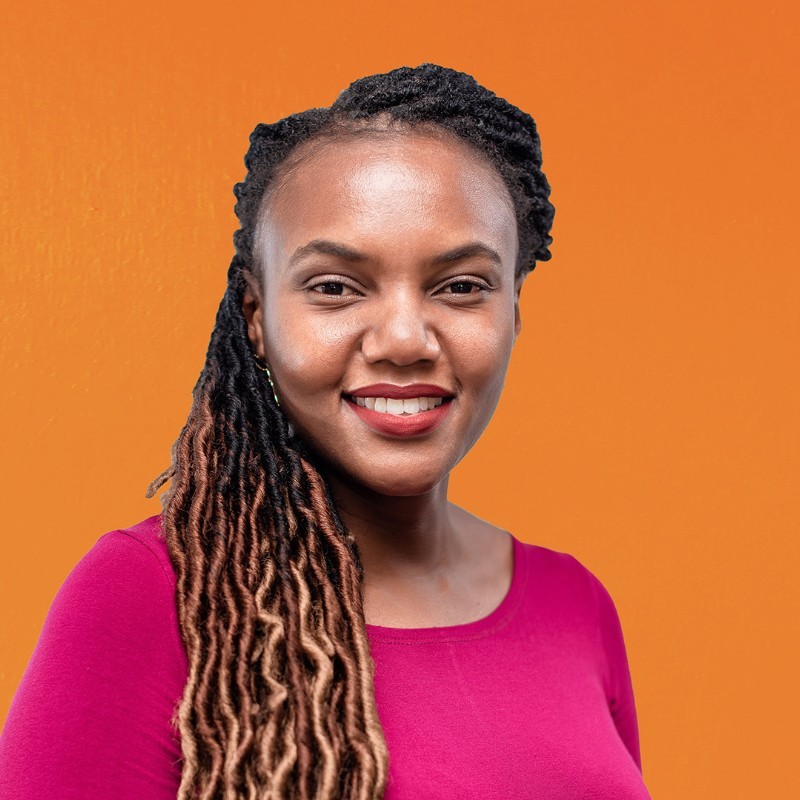Day 2 - Topic 3

Lead Partnerships - SME, AMI

Founder & CEO, Africa Turnaround Ltd.

Founder and MD, L-IFT
IFC and ATI had both experimented with blended approaches which was necessary due to the COVID-19 restrictions. So we now asked: Does Digital Deliver More for Less? Africa Turnaround, African Management Institute and L-IFT presented different aspects to this question. We learnt about an “Uber for BDS” Model: Concept for certified BDS providers to build on and use existing content (rather than reinventing the wheel).
"How much are we losing in terms of time, money, and impact by each BDS provider having to try to build their own courses and delivery systems from scratch?"
Peter l. Nduati
We learnt about AMI’s Omnichannel approach which is being used to massively scale BDS to tens of thousands of SMEs and the necessary trade-offs that need to be acknowledged, especially by donors.
"The outcomes we deliver for $1,000 support to an Ag SME would be very different from one of $10."
Naomi Kirungu
L-IFT then presented their strong belief in the need for a “High Tech, High Touch” Model. Local community coaches are essential and are considered better than “expert” trainers. This allows for a gradual, “slow drip” learning approach and also creates local jobs.
"The real content messages are going into the digital format and we've tried to make the whole program completely foolproof... even a fool could do it."
Anne Marie Van Swinderen
Human Touch is Irreplaceable
While digital platforms offer valuable tools for standardization and cost efficiency, participants emphasized that meaningful impact still hinges on human interaction. Blended models – especially those incorporating coaching, mentoring, and face-to-face engagement – were seen as critical for motivation, behaviour change, and emotional connection.
The “Uber Analogy” Reframed
Participants resonated more with a personalized, guided learning journey than with the idea of “Uberizing” BDS. In this analogy, the platform is the vehicle, but the coach or facilitator is the driver—essential for guiding learners and ensuring relevance, understanding, and completion.
Platforms Need People
Even when high-quality digital resources exist, learners need support to navigate them. Moderation, recommendation, and tailored guidance are essential to help MSMEs access the right content at the right time.
Blended Doesn’t Always Mean Cheaper
Contrary to assumptions, blended delivery may not lower costs—especially when it requires skilled coaches (“sophisticated drivers”) to guide the process. However, it can deliver higher value and better outcomes when executed well.
Tech Has Limits
Digital tools work well for technical content and theory. However, soft skills development, motivation, and group reflection still require human interaction. Additionally, tech must be adapted to low-connectivity environments, and platforms must be designed for usability in rural or low-resource settings.
Face-to-Face Anchors the Learning Journey
Face-to-face sessions are essential for introducing participants to the learning journey, setting the pace, reviewing progress, and providing coaching and support for implementation. Self-paced digital content plays a complementary role—offering broad access to standardized materials and tools—but it works best when anchored by periodic, in-person touchpoints that drive accountability and real-world application.
Day 1
Day 2
We use cookies on our website to give you the most relevant experience by remembering your preferences and repeat visits. By clicking “Accept All”, you consent to the use of ALL the cookies. However, you may visit "Cookie Settings" to provide a controlled consent.